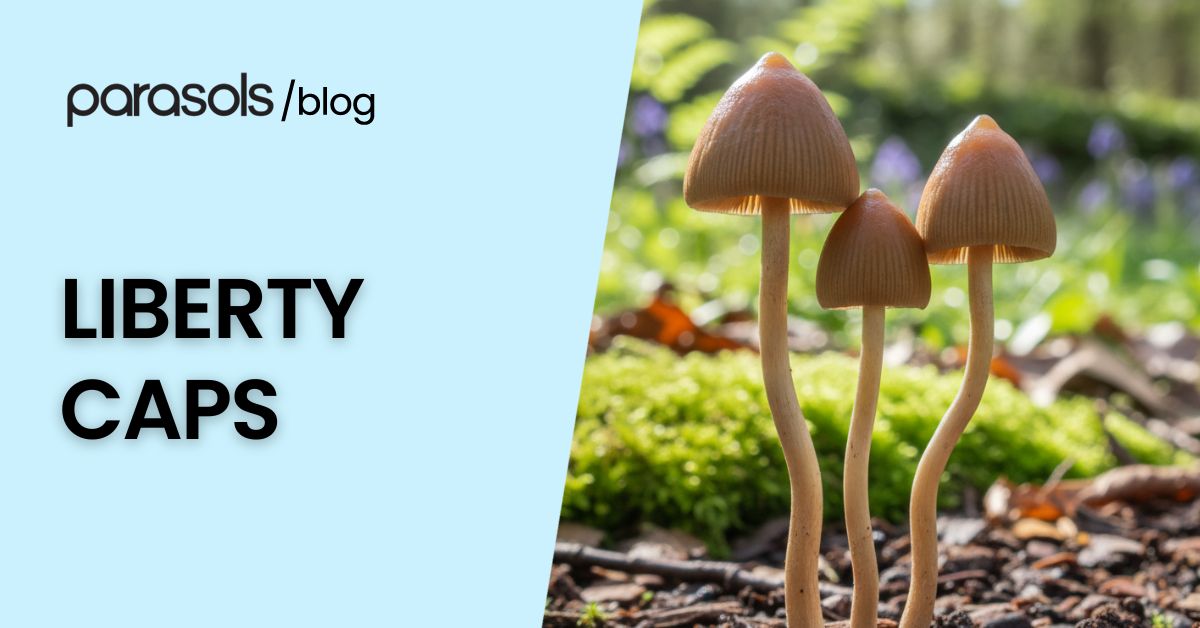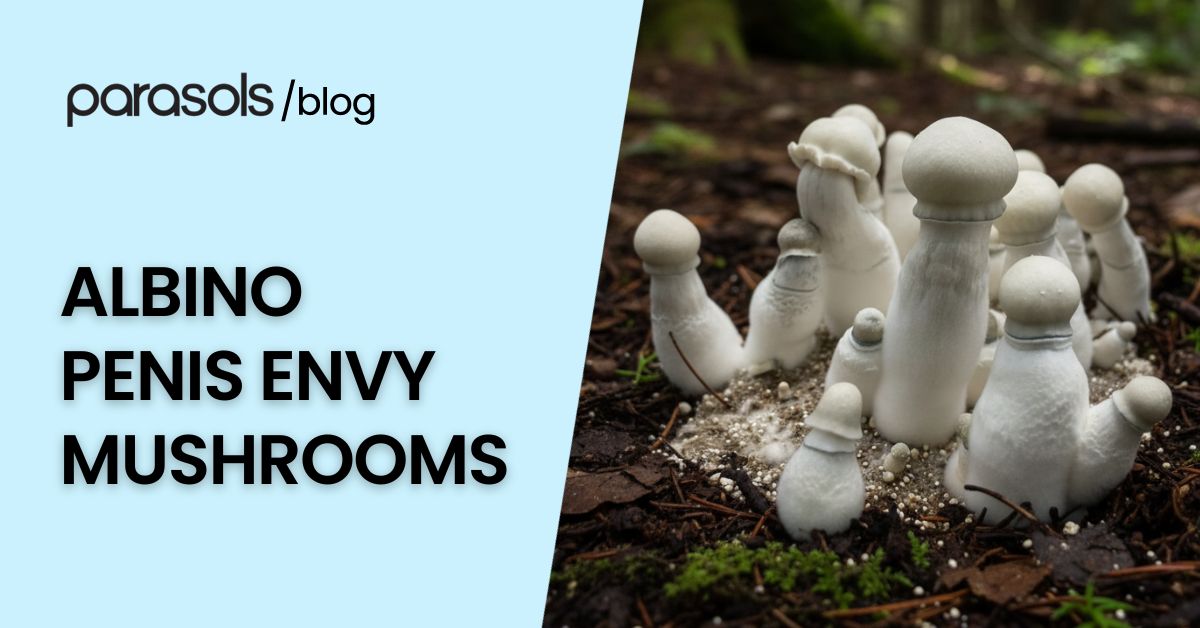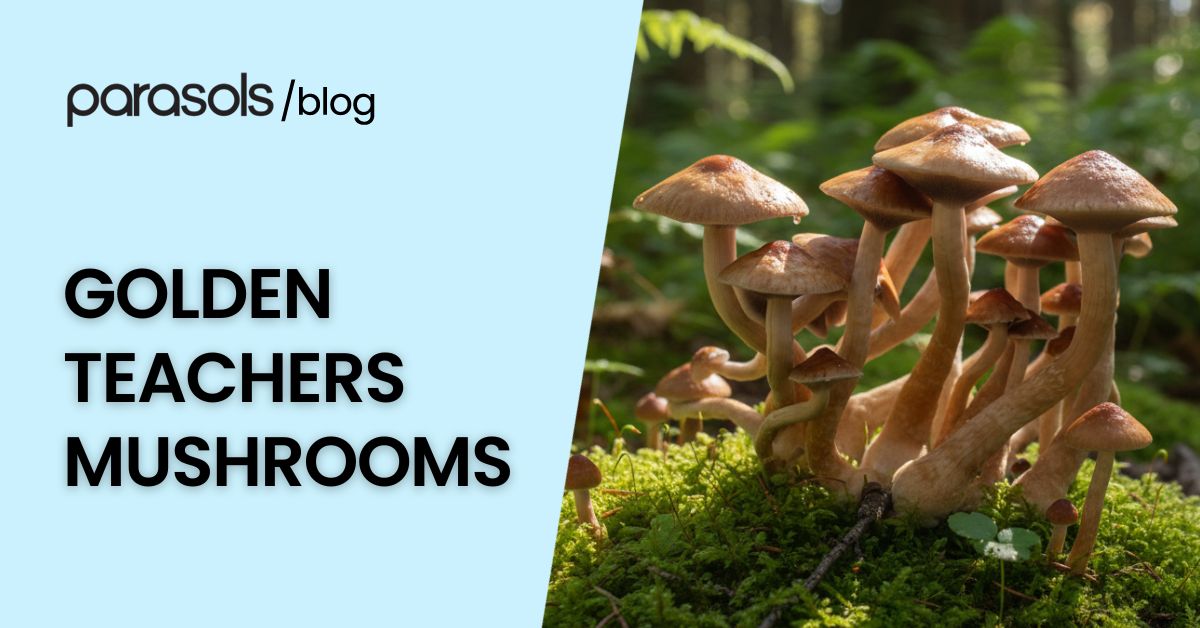When people harvest wild mushrooms, few spark as much curiosity as liberty caps. Scientists know them as Psilocybe semilanceata, a hallucinogenic species with a long history of use and intrigue.
From their quirky presence in grassy fields to their role as one of the most widespread psilocybin mushroom species, liberty caps stand out in both nature and culture.
Key Takeaways
- Liberty caps (Psilocybe semilanceata) are one of the most widespread psilocybin mushroom species in the world
- They are easily recognized by their slender stems, striated caps, and pointed tips
- Despite their small size, they are considered a potent species with strong psychoactive effects
- Their cultural, scientific, and historical significance continues to make them a focus of curiosity and research
What are Liberty Caps?
Liberty caps, or Psilocybe semilanceata, stand out as one of the most widespread psilocybin mushroom species in the world. You can recognize them by their slender stems and the striated cap that rises to a pointed tip.
These mushrooms often pop up in grassy meadows and damp pastures, where decaying grass roots fuel their growth. As a classic saprobic grassland species, they thrive in places most people might overlook on a rainy walk.
But liberty cap mushrooms aren’t just another wild fungus. As a well-known member of the genus Psilocybe, they’ve shaped cultural traditions for centuries and now spark new conversations about psychedelic mushrooms and decriminalized magic mushrooms.
Why are Liberty Caps Popular?

Liberty caps may be small, but they’ve built a big reputation around the world. From their resilience in the wild to their powerful psychoactive compounds, this mushroom continues to attract scientists, enthusiasts, and cultural communities alike.
Distinct Appearance and Easy Recognition
Liberty caps stand out thanks to their slender, graceful shape. Their striated cap with a pointed tip, pale grayish gills, and dark purplish-brown spore print make them easier to recognize than many other wild mushrooms. This distinctive look draws in novice mushroom hunters and helps researchers separate them from poisonous fungi and unrelated stropharia species.
Widespread Distribution
As one of the most widespread psilocybin mushroom species, liberty caps thrive in cool, damp grasslands across Europe, North America, and the Pacific Northwest. Psilocybe semilanceata fruits solitarily or in small scattered clusters, often appearing in habitats rich with decaying grass roots. This adaptability makes them one of the most accessible psychoactive fungi in the wild.
Potent Psychoactive Compounds
Small in size but strong in effect, liberty caps rank among the most potent species of psilocybin mushrooms. Reported psilocybin concentrations vary, but studies show they often contain higher levels than many other hallucinogenic fungi. This strength has secured their place as a popular psychoactive species for people learning hallucinogenic mushroom traditions, modern recreation, and psychedelic research.
Cultural and Scientific Significance
Liberty cap mushrooms have left a mark on both culture and science. Historically, people considered them a sacred mushroom, while today they play a role in conversations about decriminalize psilocybin and the therapeutic potential of psychedelic mushrooms. Researchers continue to study them in forensic mushroom specimen analysis, Finnish studies on psilocybin concentrations, and broader investigations into indigenous psilocybin mushrooms. Their story connects ancient traditions with modern science and policy.
How to Use Liberty Caps for the Best Effects
Over time, people have tried different ways to use liberty caps, each offering its own experience. The methods may vary, but the goal stays the same: unlock the psychoactive compounds and enjoy their effects as safely as possible.
- Eating them fresh – Many people eat moist mushrooms right after harvesting. Fresh liberty caps often taste stronger and may bring on effects more quickly, but accurate identification is critical to avoid poisonous fungi.
- Drying and storing – Collectors often dry semilanceata fruit bodies gathered from grasslands. Drying helps preserve potency, extends shelf life, and makes dosing easier since dried mushrooms can be weighed for safer psilocybin mushroom ingestion.
- Brewing into tea – Steeping liberty caps in hot water remains a popular method. The process releases hallucinogenic components while softening the earthy taste, giving users a smoother way to experience psilocybin mushrooms.
- Mixing with food – Some people grind dried liberty caps into powder and mix it with chocolate, smoothies, or other foods. This masks the flavor and makes recreational hallucinogenic mushrooms easier to consume without the strong aftertaste.
- Microdosing – Instead of seeking full hallucinogenic mushroom effects, some users prefer very small doses. Microdosing with psilocybe species is linked to subtle mood improvements and reported cognitive benefits, though scientific studies continue to examine these claims.
Are Liberty Cap Mushrooms Legal?
The legal status of liberty cap mushrooms varies widely across the globe. In many countries, psilocybin-containing mushrooms like Psilocybe semilanceata are controlled substances, which makes their possession, sale, or use illegal.
Some regions, however, have started to change course. A handful of cities and countries now decriminalize psilocybin or reduced penalties for personal use. Even with growing interest in potential therapeutic benefits, liberty caps remain a hallucinogenic species that most governments regulate strictly. Anyone interested in them should always check local laws before considering use.
Final Thoughts

Liberty caps are more than just another wild mushroom — they bring together ecology, culture, and psychoactive history in one small but powerful species. With their distinct look, wide distribution, and strong effects, they’ve become one of the most popular psilocybin mushroom species in the world.
As interest in psychedelic mushrooms and efforts to decriminalize psilocybin continue to grow, liberty caps stay at the center of curiosity and research. Discover more about psilocybin mushrooms here. At parasols we offer many different types of non detect shroom gummies like our watermelon option.
Frequently Asked Questions
How strong are liberty caps compared to other psilocybin mushrooms?
Liberty caps (Psilocybe semilanceata) rank among the most potent mushrooms in the psilocybe genus. Psilocybin concentrations vary with factors like habitat, season, and storage, but studies show levels that can surpass many other wild psilocybin-containing mushrooms. Because even small doses can produce strong effects, accurate identification and careful measurement are essential for safe psilocybin mushroom ingestion.
When do liberty caps typically grow?
Liberty caps usually appear in the cooler, wetter months of autumn, especially after steady rainfall. In Europe, for instance, semilanceata fruit bodies most often develop between September and December. Their fruiting patterns depend on climate and habitat, with moist grasslands and pastures providing the ideal environment for this saprobic grassland species.
What do liberty caps look like when they are ready to pick?
Mature liberty caps feature a conical to bell-shaped cap with a pointed tip, earning them the nickname “cap of liberty.” The cap often shows a striated texture when moist and shifts in color from pale brown to dark purple-brown as spores mature. Their slender stems and pale grayish gills are distinguishing traits, though novice mushroom hunters should stay cautious since several other grassland species look similar.
Can liberty caps be confused with poisonous mushrooms?
Yes. Several poisonous fungi and unrelated stropharia species resemble liberty caps at first glance. While traits like a striated cap and dark purplish-brown spore print help confirm identity, errors happen easily. Eating the wrong mushroom can cause serious poisoning, so experts warn against foraging without significant experience or guidance from a knowledgeable mycologist.
Do liberty caps have any traditional or indigenous uses?
Liberty caps, along with other indigenous psilocybin mushrooms, hold a history of cultural and spiritual significance. In Europe, they became known as a naturally occurring hallucinogenic mushroom, while related psilocybe species in Mexico were revered as sacred mushrooms in rituals. These traditions highlight how liberty caps represent more than recreational hallucinogenic mushrooms, connecting them instead to broader cultural practices and spiritual awakening.



Leave a comment
All comments are moderated before being published.
This site is protected by hCaptcha and the hCaptcha Privacy Policy and Terms of Service apply.